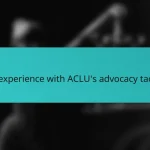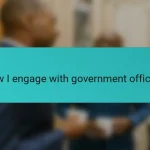Key takeaways
- Effective legal advocacy blends research, strategy, community education, and compassion to create a lasting impact beyond courtroom victories.
- The Southern Poverty Law Center (SPLC) exemplifies the proactive use of law to challenge systemic injustice and educate the public.
- Successful advocacy requires patience and adaptability, emphasizing the importance of preparation, coalition-building, and long-term planning.
- Personal growth in advocacy stems from confronting challenges, embracing vulnerability, and finding motivation in small victories and societal shifts.
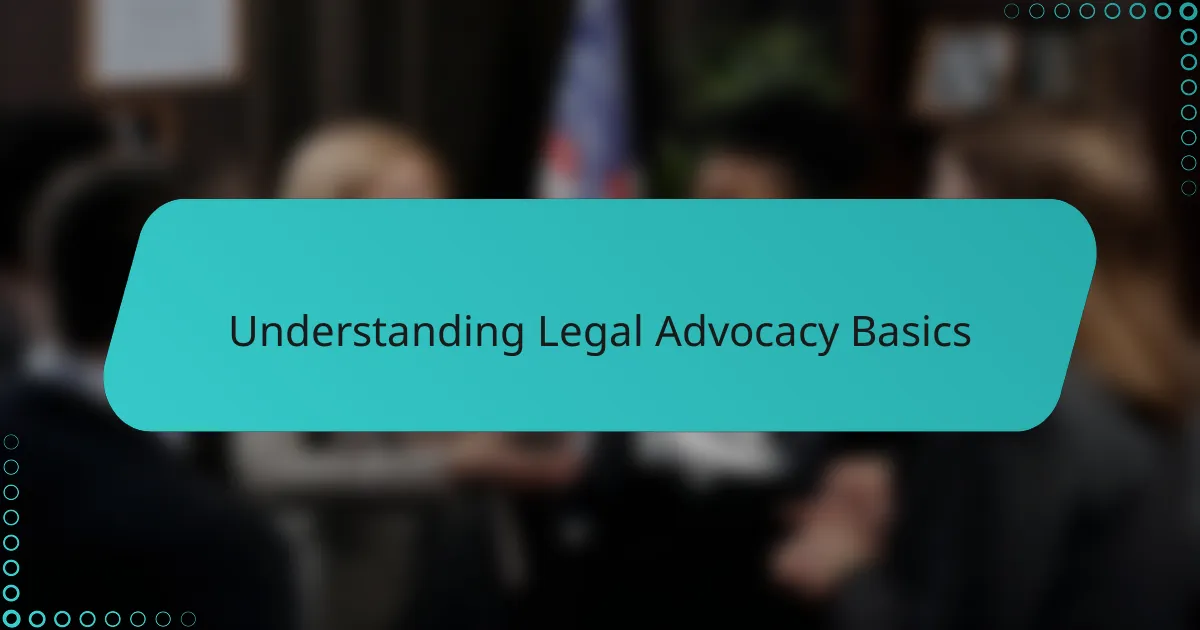
Understanding Legal Advocacy Basics
Legal advocacy, at its core, is about using the law to protect rights and push for justice. I’ve found that it’s not just about knowing statutes—it’s about understanding the human stories behind legal issues. Have you ever considered how powerful it feels to stand up for someone whose voice might otherwise go unheard?
In my experience, effective legal advocacy combines research, strategy, and compassion. It’s more than just arguing a case in court; it’s about influencing policy, educating communities, and sometimes even changing public perception. This broader view helped me appreciate just how many tools are in an advocate’s toolkit beyond legal briefs and courtroom battles.
What truly fascinates me is how legal advocacy demands both patience and urgency—balancing careful preparation with the need to respond quickly to injustice. That tension keeps you engaged and constantly learning. It made me realize that advocacy isn’t a passive role but a dynamic commitment to making a tangible difference.
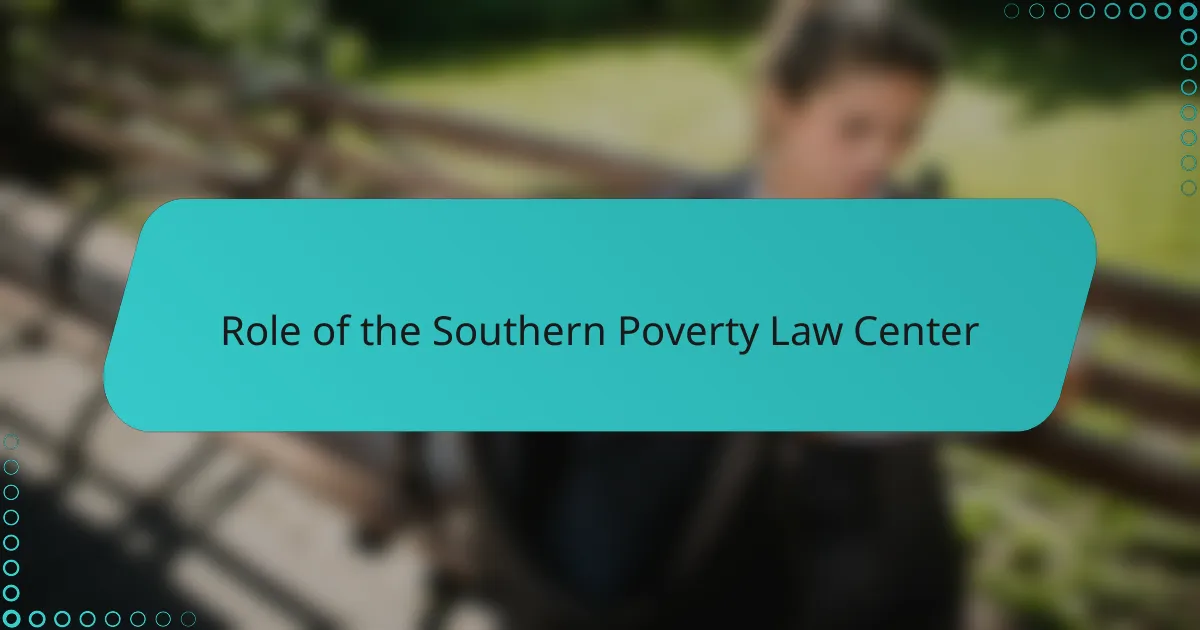
Role of the Southern Poverty Law Center
When I first encountered the Southern Poverty Law Center (SPLC), I was struck by their unwavering commitment to fighting hate and bigotry through the legal system. They don’t just file lawsuits—they build cases that challenge systemic injustice, often against formidable opponents. Have you ever wondered what it takes to confront entrenched discrimination head-on? The SPLC’s work taught me that it requires courage, resilience, and a strategic mindset.
What resonates with me is how the SPLC uses the law as a powerful tool for social change, not just as a reaction to problems but as a proactive force. Their efforts extend beyond the courtroom—educating the public, monitoring hate groups, and advocating for policy reforms. This holistic approach showed me that legal advocacy is as much about changing hearts and minds as it is about winning cases.
I remember reading about one of SPLC’s landmark civil rights cases and feeling inspired by their persistence against overwhelming odds. It made me realize that effective advocacy isn’t just about winning quickly but about building lasting change through perseverance and legal expertise. That insight has shaped how I view the role of law in advancing justice every day.
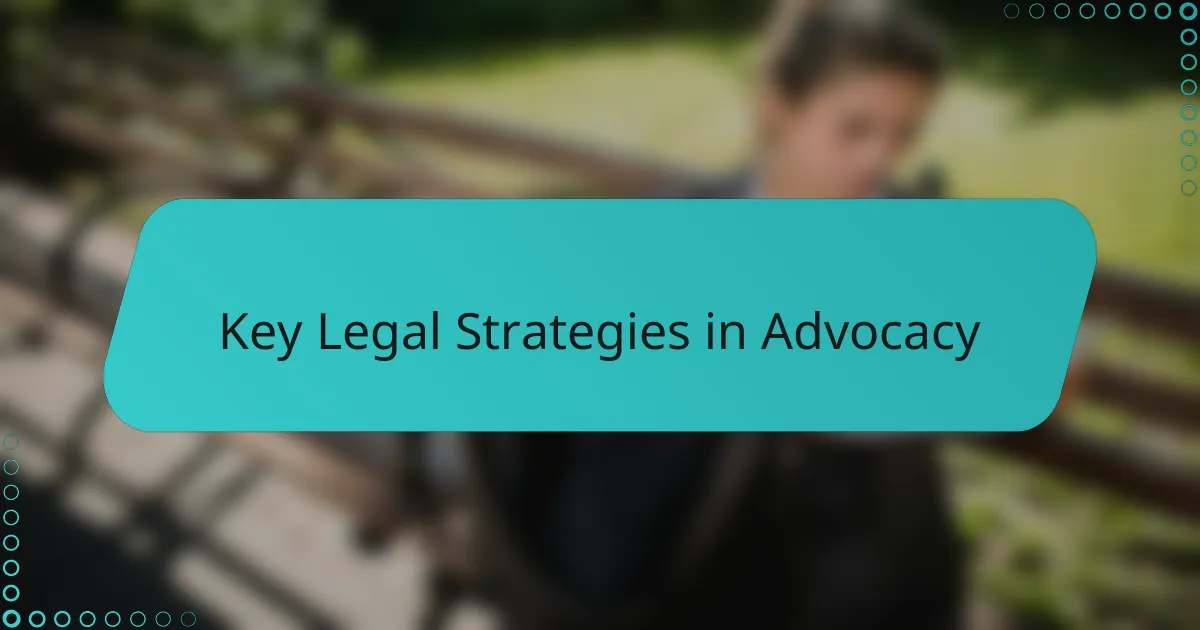
Key Legal Strategies in Advocacy
One strategy that stood out to me is the targeted use of impact litigation—choosing cases that can create broad legal precedents rather than just resolving individual disputes. Have you ever paused to think about how one well-crafted lawsuit can shift entire systems? Watching the SPLC strategically select and invest in these landmark cases made me appreciate the foresight and patience necessary in legal advocacy.
Another approach that I found compelling is the integration of legal action with community education and public awareness campaigns. It’s not enough to win inside the courtroom; advocates must also work outside it to build support and prevent future harm. This holistic strategy reminded me that legal victories can be fragile if the underlying attitudes and policies don’t change along with the laws.
What really resonated with me is the SPLC’s commitment to thorough research before taking action. They invest time in gathering evidence, understanding the cultural context, and anticipating counterarguments. It taught me that effective advocacy requires more than passion—it demands preparation, precision, and a strategic mindset to make every legal move count.
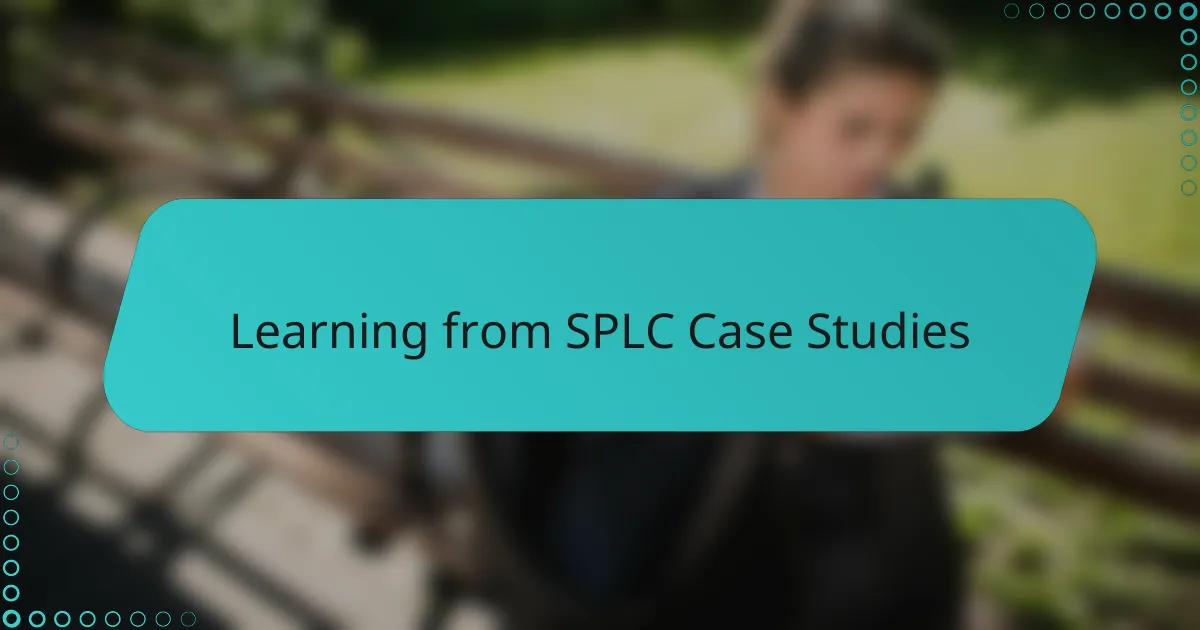
Learning from SPLC Case Studies
What struck me most when studying SPLC case studies was their relentless focus on the human impact behind each legal battle. Have you noticed how every case isn’t just a file number but a story of real people facing injustice? This perspective deepened my understanding of how law can serve as a lifeline for those marginalized by society.
Digging into these cases, I realized how the SPLC expertly balances bold legal action with patience. For example, some cases stretched on for years, requiring steady conviction and strategic adjustments. It made me think—how often do we underestimate the power of perseverance in legal advocacy?
The SPLC’s case studies also highlighted the importance of building coalitions beyond the courtroom. Seeing them work hand-in-hand with communities and activists reminded me that meaningful change grows from collective effort. It’s a lesson I carry with me: legal victories are stronger when rooted in public support and shared resolve.
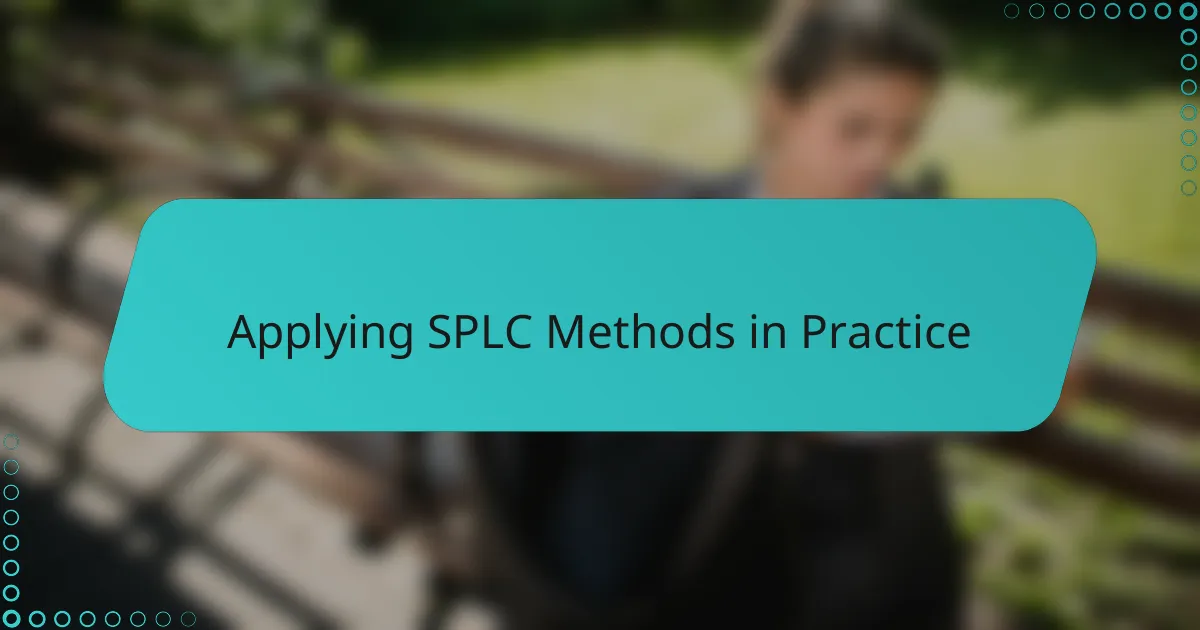
Applying SPLC Methods in Practice
Applying SPLC methods in practice means embracing a multifaceted approach to legal advocacy. I’ve learned that it’s not enough to rely solely on courtroom tactics; instead, integrating litigation with education and community engagement creates a more resilient fight for justice. Have you ever tried combining legal research with grassroots organizing? That synergy can amplify impact in ways I hadn’t anticipated.
What’s transformative about the SPLC’s methods is their strategic patience. I recall one case where immediate results seemed elusive, yet the steady, deliberate pressure eventually dismantled entrenched discrimination. That taught me the value of persistence and adapting strategies over time rather than seeking quick wins.
In practice, meticulous preparation is non-negotiable. Gathering comprehensive evidence and anticipating opposing arguments isn’t just legal diligence—it’s the backbone of building cases that can withstand intense scrutiny. I experienced firsthand how this kind of deep preparation fosters confidence and opens doors for broader advocacy beyond just winning a single case.
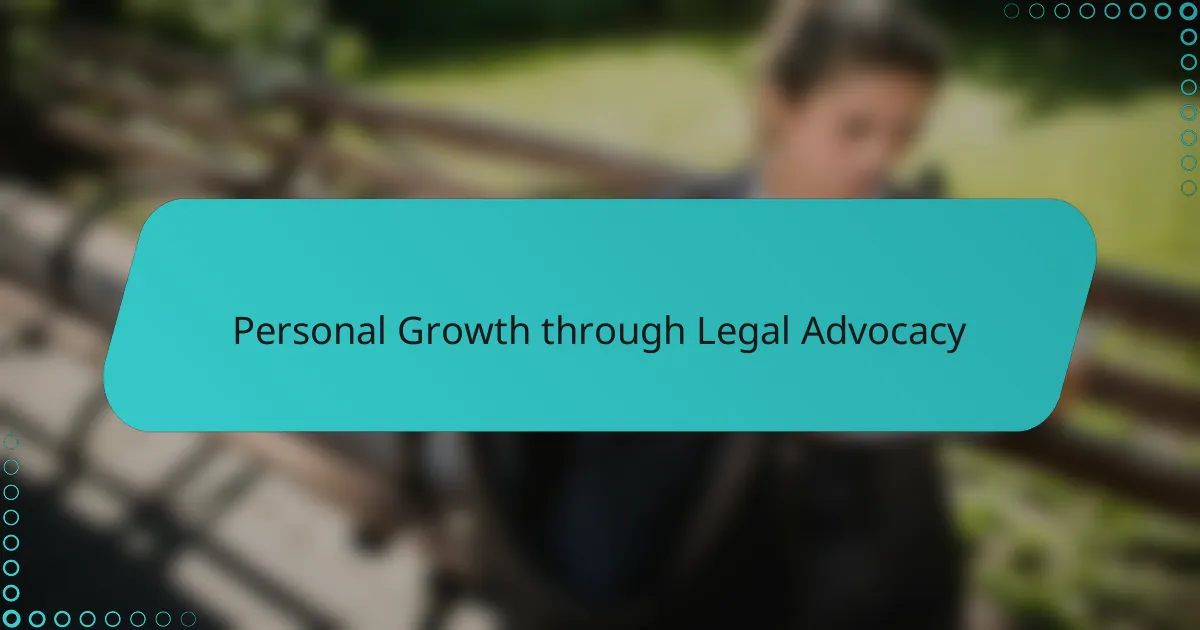
Personal Growth through Legal Advocacy
Personal growth through legal advocacy has been one of the most profound journeys in my life. I often reflect on moments when a case demanded not just my legal knowledge but my empathy and resilience. How do you stay motivated when the road to justice feels long and winding? For me, it’s the small victories—the gratitude in a client’s eyes or the shift in public awareness—that fuel continuous growth.
I’ve come to realize that legal advocacy stretches your capacity for patience and adaptability. Early on, I struggled with the slow pace of systemic change. But watching advocates persist, knowing that real transformation often requires years, reshaped my mindset. It’s a humbling reminder that personal growth often mirrors the very justice we seek: steady, deliberate, and rooted in hope.
This work also challenged me to embrace vulnerability. Confronting injustice means facing uncomfortable truths about society and myself. Yet, each difficult conversation and setback became an opportunity to deepen my commitment and refine my approach. Have you noticed how true learning often arises from discomfort? For me, that has been the hallmark of personal growth through legal advocacy.
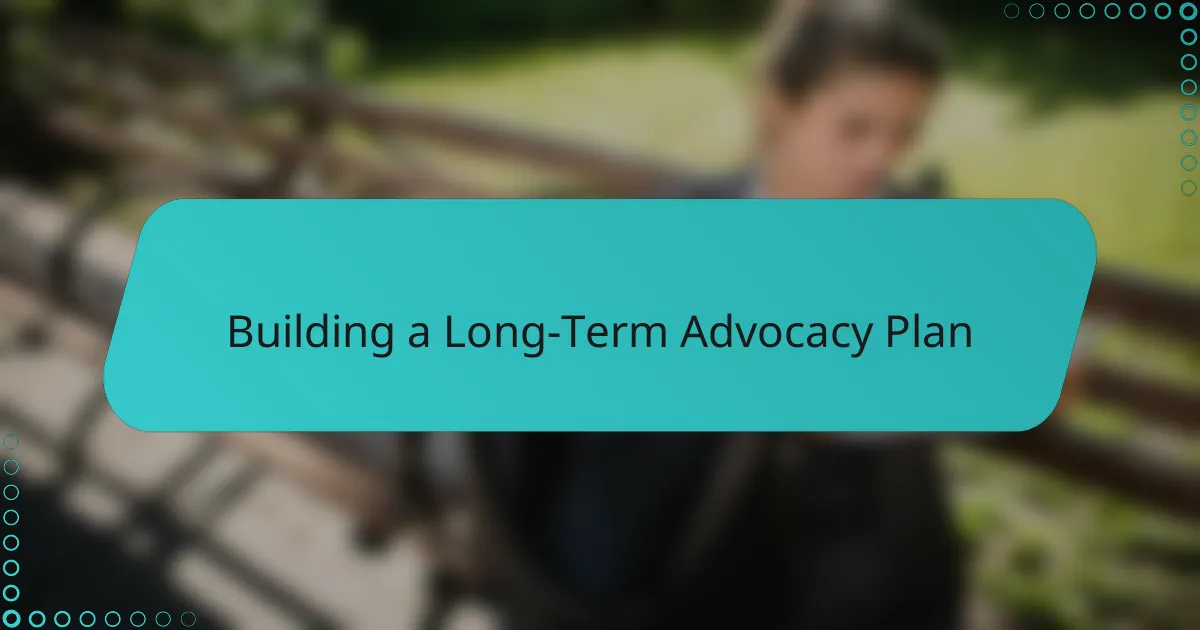
Building a Long-Term Advocacy Plan
Building a long-term advocacy plan means embracing patience as much as passion. I’ve found that it’s easy to get caught up in immediate wins, but sustainable change requires a vision that stretches far beyond the courtroom. Have you ever mapped out not just the next case, but the next five or ten years of work? That kind of foresight pushes you to think strategically about resources, partnerships, and the evolving legal landscape.
In my experience, a strong plan weaves together litigation, public education, and coalition-building—just like I saw with the SPLC’s model. It’s about creating momentum that doesn’t fizzle out once a case is decided but builds a foundation for ongoing advocacy. I remember feeling overwhelmed at first, trying to juggle all these elements, but breaking it down into smaller goals helped me stay focused and measure progress over time.
What’s essential, though, is flexibility. No plan survives contact with reality perfectly intact. I once had to pivot dramatically when new evidence changed the angle of a case I was working on. That moment taught me that a long-term plan isn’t a rigid script but a living document—guiding your efforts while adapting to new challenges and opportunities. How do you balance sticking to your goals with knowing when to change course? For me, it’s an ongoing conversation between strategy and responsiveness.

